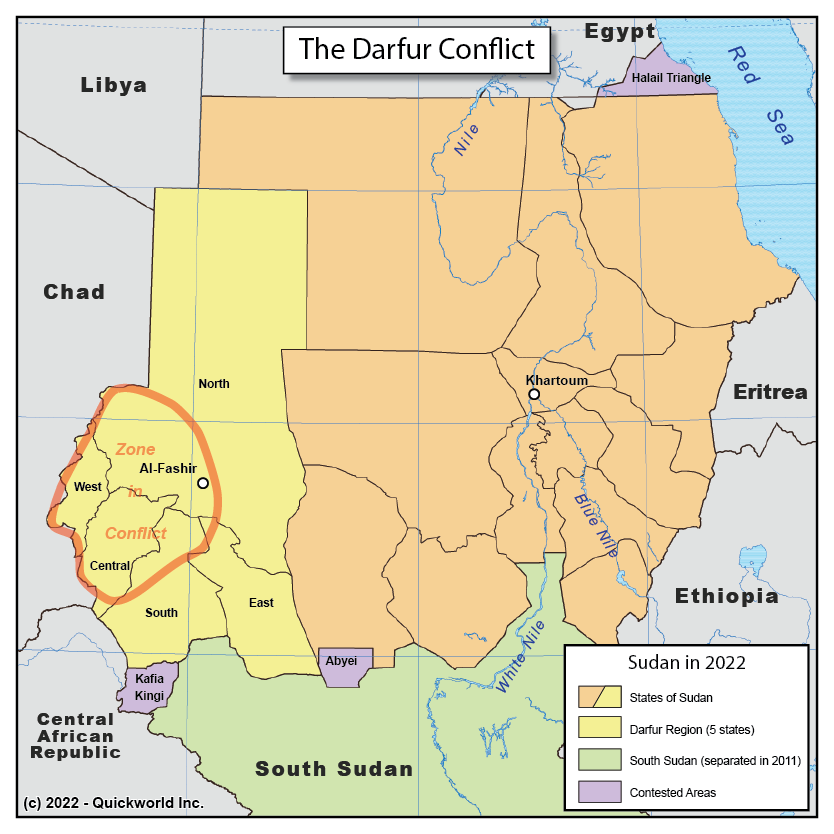Our Series on 21st Century Conflicts takes us to Darfur, a region of Western Sudan that has been home to high intensity warfare in the last two decades.
Sudan has had many internal conflicts since its independence in 1956. Most of those have either ethnic or religious dimensions. The southern region formally seceded in 2011 as South Sudan. Darfur, directly to the Northwest of South Sudan, was for a while an independent sultanate before the British incorporated it into Egyptian Sudan in 1916.
While ethnically diverse, Darfur was less arabized than the Nile valley that lies to the East of it, and the conflict mostly started from the political aspirations of local populations against the central power. Arab militias armed by the central government committed a series of atrocities sometimes qualified as genocide, with the systemic destruction of villages that left up to half a million victims.
The African Union intervened in 2007, considerably lowering the intensity of violence against Darfuri. The deposition of the government led by Omar Al-Bashir in 2019 allowed the parties to start negotiations, but the situation remains volatile as of 2022.
The Darfur Conflict


